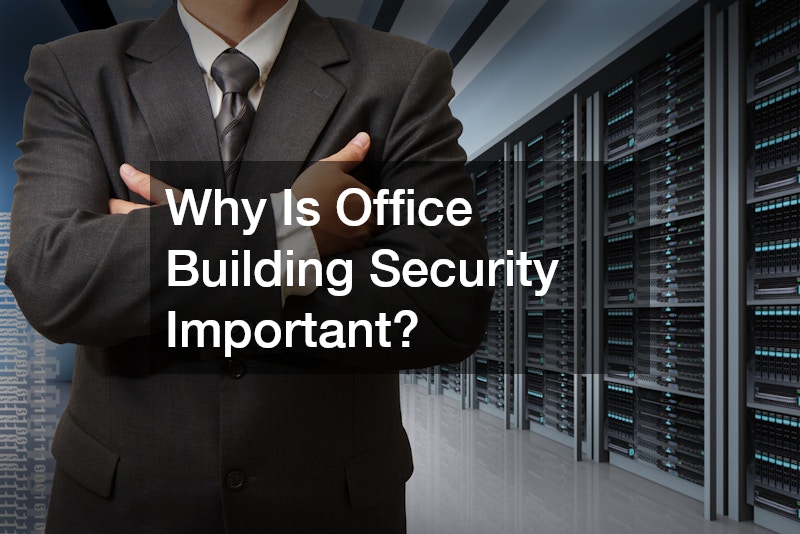Modern office environments demand more than just efficient workflows and sleek design—they require robust security systems that protect people, assets, and operations. From physical threats to digital breaches, security concerns are wide-ranging and increasingly complex. This guide explores every essential aspect of office building security, offering insights into best practices, current trends, and strategic planning for organizations of all sizes.
Why Is Office Building Security Important?
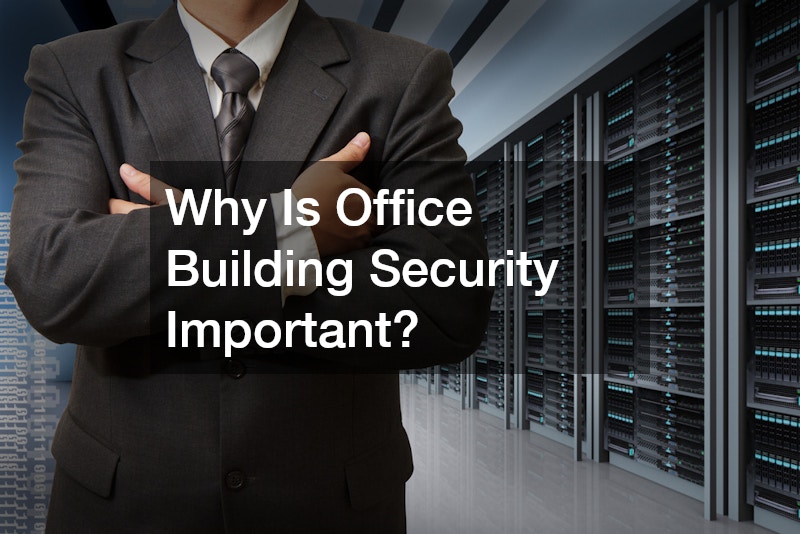
Protecting Employees and Visitors
The safety of employees and visitors is the most fundamental reason to invest in building security. Ensuring people feel safe enhances productivity and morale. Physical threats, unauthorized access, and emergency situations must be accounted for with reliable procedures and technologies in place to prevent harm and maintain peace of mind.
Safeguarding Assets and Information
Office buildings house valuable equipment, intellectual property, confidential documents, and digital infrastructure. Protecting these assets requires not only physical barriers but also strategic systems that deter theft, prevent data breaches, and track access to sensitive areas.
Enhancing Business Reputation
Clients, partners, and stakeholders expect businesses to provide a secure environment. Visible and effective security solutions reinforce trust and enhance a company’s image. A single incident can damage public perception and erode confidence in a brand, particularly if the event was preventable.
Legal and Regulatory Compliance
Certain industries are subject to strict regulations regarding workplace security, data protection, and employee safety. Adhering to these legal obligations is critical to avoid penalties and lawsuits. Security systems help enforce compliance through access logs, incident records, and surveillance footage.
Operational Continuity
Security disruptions can halt operations and lead to significant financial losses. Intrusions, cyberattacks, and emergency events not only create immediate chaos but also affect long-term business continuity. Proactive security planning helps mitigate these risks and ensures smooth day-to-day functioning.
What Are the Essential Components of an Office Building Security System?
Access Control Systems
Access control systems regulate who can enter different parts of the building. This may involve ID badges, key cards, pin codes, or biometric verification. The goal is to restrict access to authorized individuals and maintain an audit trail for every entry and exit.
Surveillance and CCTV
Closed-circuit television systems provide real-time monitoring and record activity throughout the premises. Security personnel can monitor footage live or review it later in case of incidents. Modern systems use high-definition and 360-degree cameras to cover every angle.
Intrusion Detection Systems
These systems alert security teams to unauthorized entry attempts. Sensors on doors, windows, and vulnerable entry points can trigger alarms when breached. Motion detectors and glass-break sensors add another layer of protection.
Alarm Systems
Audible and silent alarm systems play a critical role in alerting both internal teams and emergency services. Fire alarms, panic buttons, and intrusion alerts can be integrated into one cohesive platform for fast response during incidents.
Cybersecurity Measures
Physical security must work hand-in-hand with digital protection. Firewalls, secure Wi-Fi access, encrypted communications, and anti-malware systems guard against data breaches, ransomware, and other cyber threats targeting modern office networks.
How to Develop a Security Strategy for Your Office Building?
Assessing Threats and Vulnerabilities
Every building presents unique risks depending on its location, layout, and function. A thorough threat assessment identifies potential weaknesses in the existing security framework. This assessment should include both physical and digital entry points.
Setting Security Goals and Objectives
Security planning requires clear objectives. Whether the focus is on preventing theft, ensuring emergency preparedness, or safeguarding data, goals should guide decisions about system selection, staff training, and budget allocation.
Developing Emergency Procedures
Emergency preparedness is a vital part of any security strategy. Procedures for fire, natural disasters, medical incidents, or active threats should be clearly documented and practiced regularly through drills and simulations.
Training and Involvement of Employees
Security is a shared responsibility. All staff members should be trained on access protocols, emergency exits, and how to report suspicious activity. Empowered employees can become an asset to the overall security plan.
Continuous Evaluation and Improvement
Security threats evolve, and so must the systems designed to counter them. Regular reviews and updates to procedures, equipment, and software ensure the security plan remains relevant and effective over time.
What Are the Latest Trends in Office Building Security?
Integration of AI and Machine Learning
Artificial intelligence is transforming how security systems detect and respond to threats. AI-powered cameras can identify suspicious behavior, recognize faces, and filter false positives, leading to faster and more accurate decision-making.
Cloud-Based Security Solutions
Moving security management to the cloud allows real-time access from remote locations, automatic updates, and scalable storage for video and data. Cloud platforms also offer better collaboration between security teams across multiple sites.
Biometric Access Control
Biometric technology—such as fingerprint scans, facial recognition, and retinal scans—is becoming increasingly popular for access control. These systems are harder to manipulate and provide more secure identification than traditional credentials.
Smart Surveillance Systems
Smart surveillance combines AI, real-time alerts, and mobile access. Cameras can send instant notifications when unusual activity is detected, enabling rapid response and providing live feeds to managers or security personnel from any device.
Use of IoT in Security Devices
The Internet of Things (IoT) enables connected devices to share data and automate security functions. IoT-enabled locks, lighting, alarms, and sensors can all be managed from a central hub for better integration and efficiency.
How to Choose the Right Security System for Your Office Building?
Identifying Specific Needs
Office security needs vary by industry, building size, and location. Incorporating solutions like a 5 point security door or a security gate system helps reinforce entrances, especially in high-traffic areas. Features such as high impact windows can also enhance physical protection without sacrificing natural light.
Considering Scalability
Security systems should accommodate growth. Features like LED retrofitting provide scalable lighting solutions that integrate with motion sensors and surveillance equipment. Similarly, access systems should support added users as businesses expand.
Evaluating Vendors and Products
Choosing the right vendor is critical. Look for providers who offer multi-service solutions—such as a commercial locksmith who can also install advanced locking systems—and ensure they have experience with integrations including garage door service setups and access panel retrofits.
Budget Considerations
Security should be cost-effective, not cheap. Proper budgeting accounts for equipment, installation, and maintenance. If your site requires dumpster rentals, secure enclosures should be part of the plan to prevent tampering or unauthorized dumping.
Ensuring User-Friendliness
Systems should be simple to use. Employees are more likely to comply with protocols if the interface is intuitive. Training should be provided for all users, from surveillance monitors to those managing physical infrastructure like garage door service mechanisms or security gate panels.
How to Implement Office Building Security Measures Efficiently?
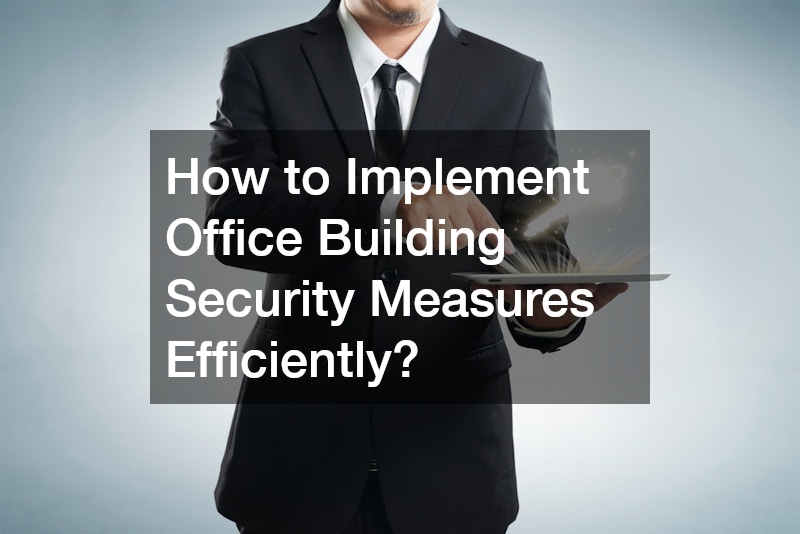
Planning and Coordination
Efficient implementation starts with a plan. Coordinate system integration across departments, including IT, HR, facilities, and outside contractors. In some cases, steel fabrication may be required to custom-make entry gates or mounting hardware.
Involving Stakeholders
Stakeholders must be involved from the outset. Commercial landscapers, for instance, should ensure outdoor visibility is maintained for surveillance cameras and that plantings don’t obstruct motion sensors or lighting systems.
Setting Clear Expectations
Staff responsibilities and emergency protocols should be clearly communicated. This includes handling access points, reporting issues, and even managing shredding service bins for sensitive document disposal.
Timely Installation and Testing
Once the plan is in place, installation must be handled swiftly and accurately. Security features such as high impact windows and surveillance cameras must be tested extensively to ensure performance under stress.
Training and Support
All employees should receive thorough training on system use and response procedures. Partner with commercial locksmith professionals or garage door service technicians to walk employees through emergency override systems and locking protocols.
How to Maintain Office Building Security Systems?
Regular Inspections and Servicing
Perform regular checks on all equipment. LED retrofitting in security lighting systems should be inspected to ensure consistent performance. Access readers, cameras, and locking systems should be tested monthly.
Updating Software and Hardware
Outdated systems are vulnerable systems. Make software updates part of routine maintenance. Replacing hardware, including components built through steel fabrication, ensures ongoing durability and system integrity.
Monitoring and Reporting
Monitor system activity daily. If the building contracts shredding service providers, logs should be kept for document destruction. Surveillance systems should retain footage for at least 30 days, with backups stored securely.
Handling Repairs and Replacements
Security issues must be addressed quickly. From faulty locks to broken security gates, delaying repair increases risk. Vendors offering same-day support for components such as dumpster rentals or entry systems can prevent operational downtime.
Continuous Training and Education
Staff turnover and new technology demand continual education. Regular security briefings and refresher courses should cover everything from badge protocols to use of high-security access areas and emergency responses.
What Are the Common Challenges in Office Building Security?
Balancing Security and Privacy
While security systems protect people, they also raise privacy concerns. Clear communication and strategic placement of cameras help avoid discomfort while maintaining full coverage.
Handling Emergencies
Systems are only as good as their response plans. Emergency protocols must be tested regularly and include secure exit access via garage door service doors and side gates.
Managing Human Factor Risks
Employees can pose risks, intentionally or not. Social engineering, careless behavior, or failure to lock doors are common issues. Awareness programs reduce this vulnerability.
Dealing with False Alarms
False alarms drain resources and reduce trust in the system. Advanced systems using AI can distinguish between actual threats and harmless movement, reducing unnecessary responses.
Technology Integration Issues
Poor integration leads to gaps in coverage. Make sure security gate systems, LED lighting, and commercial locksmith services work together through a centralized platform.
How Can Technology Enhance Office Building Security?
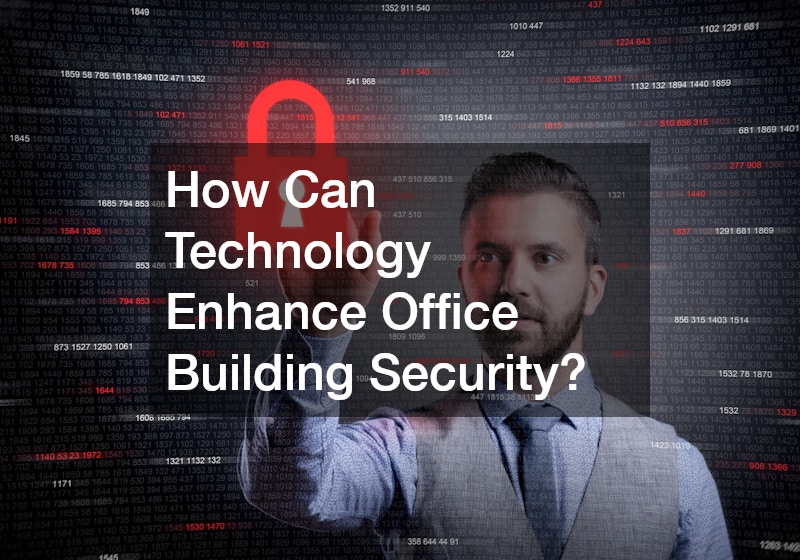
Role of AI and Automation
AI improves decision-making and automates responses. Automated alerts, facial recognition, and threat detection speed up reaction times and reduce reliance on human oversight.
Enhanced Surveillance Capabilities
Modern surveillance cameras offer motion tracking, night vision, and smart alerts. When placed strategically, especially near dumpster rentals or service bays, they prevent unauthorized access.
Improved Access Control with Biometrics
Biometric systems offer unmatched precision. Coupled with 5 point security door locks and security gate systems, they create a virtually impenetrable perimeter.
Use of Data Analytics
Analytics can detect suspicious behavior or access anomalies. These insights allow proactive threat management and help justify upgrades or added features.
Remote Monitoring Capabilities
With remote access, security teams can monitor sites from anywhere. Whether it’s a surveillance feed, access control panel, or environmental data—centralized oversight boosts coverage.
How to Ensure Compliance with Security Regulations?
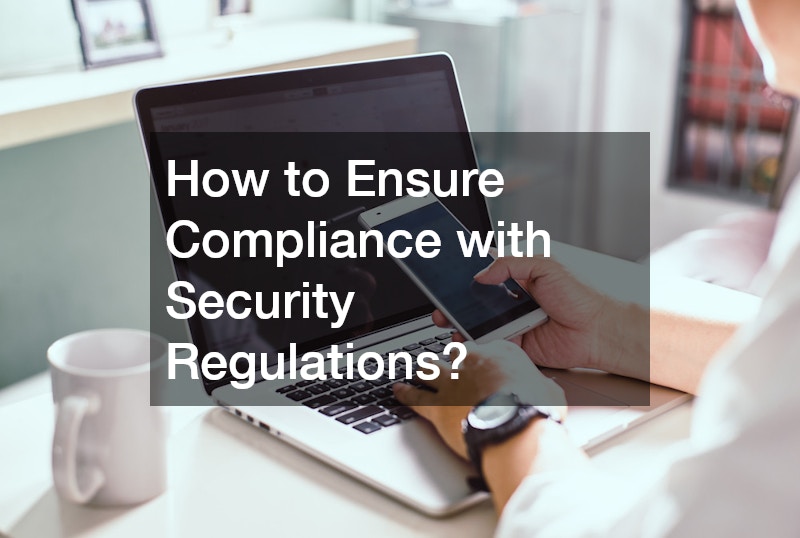
Understanding Relevant Laws and Standards
Ensure compliance with OSHA, local codes, and industry-specific regulations. This includes secure data handling via shredding service and controlled waste removal with regulated dumpster rentals.
Documentation and Record Keeping
Keep records of access logs, audits, employee training, and maintenance. These documents support legal compliance and prepare your business for inspections.
Regular Audits and Inspections
Frequent checks ensure systems perform correctly and remain compliant. Include commercial locksmith services and steel fabrication assessments in your annual reviews.
Employee Training and Certifications
Training programs must align with regulatory requirements. Certify personnel on proper security gate usage, document handling, and emergency evacuation.
Engagement with Security Professionals
Hiring specialists—like commercial locksmiths or garage door service providers—ensures installations meet professional standards. Their expertise contributes to both safety and compliance.
Final Thoughts
Office building security is more than a checklist—it’s an evolving commitment to protecting people, property, and information. Through thoughtful planning, advanced technology, and collaboration with trusted professionals, businesses can create environments that are secure, efficient, and prepared for anything. Whether you’re upgrading surveillance systems or installing high impact windows and steel-reinforced gates, every layer adds strength to your organization’s foundation.
An effective security strategy must be proactive rather than reactive. It’s not just about installing the latest gadgets; it’s about building a culture of awareness, responsibility, and resilience. From the frontline receptionist using an access control system to the facilities manager coordinating garage door service inspections, everyone has a role to play. Even external contributors, like shredding service providers or commercial landscapers, become part of the larger security ecosystem when managed with intent.
The key is continuous evaluation—adapting to new threats, scaling with business growth, and staying compliant with evolving regulations. By integrating smart tools, training your team, and working with experienced vendors across multiple service areas—from steel fabrication to dumpster rentals—you establish a holistic defense that supports both security and operational excellence.
Ultimately, investing in security isn’t just about minimizing risk. It’s about creating a workplace where people feel safe, where operations run smoothly, and where the future can be built on a foundation of preparedness and trust.

